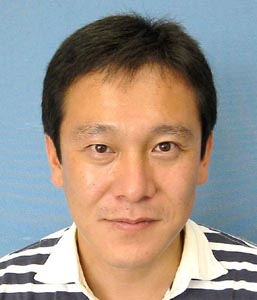
Seiji Maeda, Ph.D.
Assistant
Professor
Center
for Tsukuba Advanced Research
Seiji
Maeda received both his M.S. and Ph.D. degrees in health and sport sciences
from the
Exercise, endothelin, and
nitric oxide
Vascular endothelial cells produce endothelin-1 (ET-1) and nitric oxide (NO). ET-1 has a potent vasoconstrictor effect, and NO has a potent vasodilative effect. The productions of ET-1 and NO are markedly and tissue-specifically changed by exercise. Furthermore, ET-1-mediated vasoconstriction participates in the decrease of blood flow in the internal organs during exercise, and therefore, that these actions of endogenous ET-1 partly contribute to the increase of blood flow in active muscles during exercise. Thus, endogenous ET-1 participates in the exercise-induced redistribution of tissue blood flow. NO may also contribute to the regulation of circulation during exercise by changing vascular tonus. There may be an interaction between the ET-1 production system and the NO production system in the regulation of blood flow during exercise. Therefore, it is considered that ET-1 and NO play important roles in circulatory regulation during exercise to increase blood flow for active muscles.